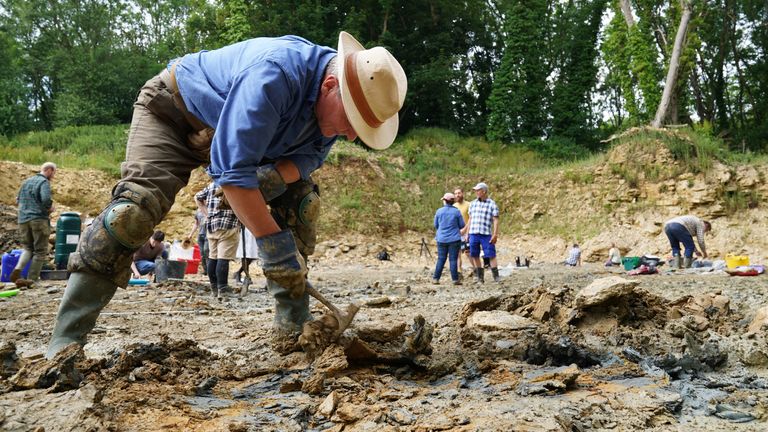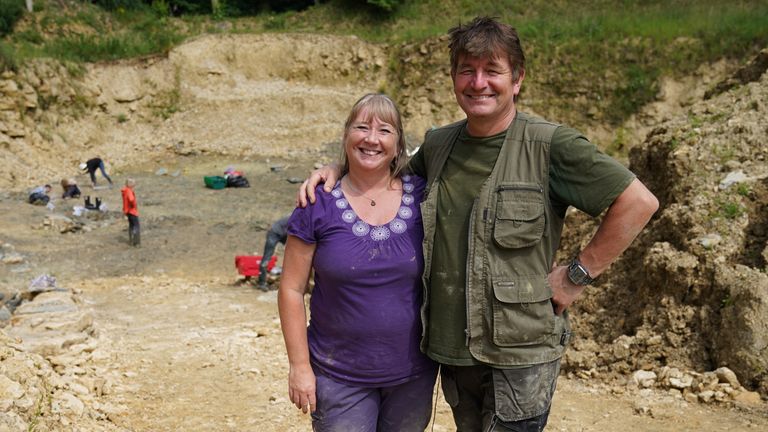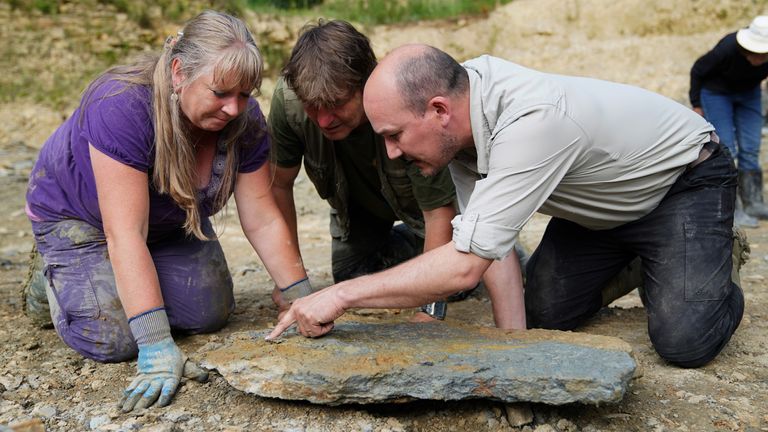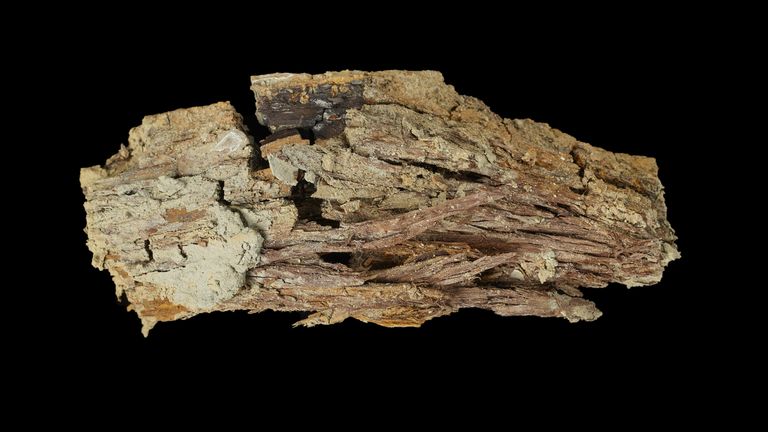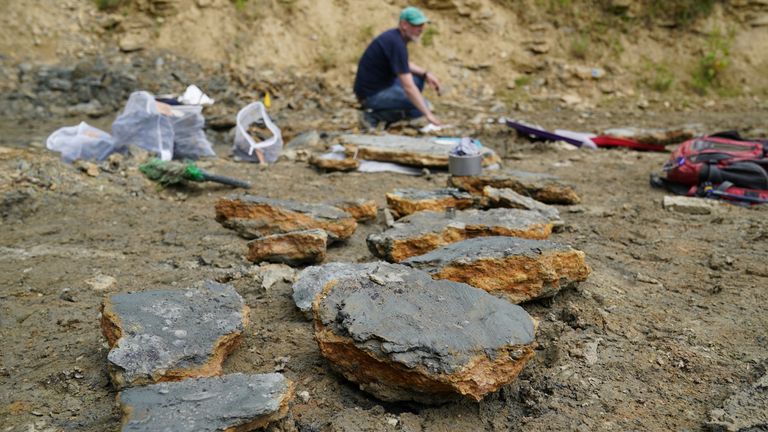Couple discover ‘mammoth’ find of rare marine fossils in Wiltshire
A couple using Google Earth have uncovered one of the largest collections of rare marine fossils in the UK.
Neville and Sally Hollingworth, non-professional palaeontologists, discovered the site in Wiltshire during the second COVID lockdown while researching the geology of the area online.
They then contacted Dr Tim Ewin, a senior curator in Earth sciences at the Natural History Museum (NHM), who secured funding for a dig at the site.
Dr Ewin was amazed by the hundreds of specimens including echinoderms, sea lilies and echinoids, dating back to middle Jurassic period (174 to 164 million years ago).
The findings should allow new research that was never before possible due to the small number of samples held in collections.
Feather stars, sea lilies and starfish fossils are hard to come by since their multiplate skeleton falls apart soon after death – and require instant burial for preservation.
Dr Neville Hollingworth is an honorary research associate at the University of Birmingham’s school of geography, earth and environmental science.
He said: “About six months ago, at the beginning of the year, when we were doing some research on local geology we noticed on Google Earth this little quarry and got in touch with the site manager and asked if we could visit.
“So we came on down to the bottom of the quarry and we noticed that the floor of the quarry was a clay layer, and on the surface of the clay with lots and lots of little fossils which we call crinoids or feather stars.”
The couple took a slab from a site and cleaned it up at home, where they discovered an “incredible sight” of “beautiful” sea lilies, crinoids, starfish and brittle stars.
Mrs Hollingworth said: “It was amazing, the preservation is absolutely stunning.
“They are 167 million years old, these little critters, and the preservation is just amazing.”
Dr Hollingworth said that in 2004 he found a Mammoth skull, but that the discovery of the site was equal, if not better, to that.
Speaking at the dig, he said: “This is a different type of site with different types of fossils, but they’re unique from that perspective, this is a mammoth find.”
He added: “We’ve got a multidisciplinary team bringing it all together to understand the environment in which these animals lived and then died.”
Dr Hollingworth said that from all the evidence gathered so far, the animals were probably buried alive in mudflow.
Dr Ewin explained: “We know that they were buried during life, because we’ve got some evidence to show that the animals are adopting what we call stress position to being buried – they’ve closed up their arms to try to stop the mud getting into their mouths and our other orifices.
“So we know these animals were alive when they were buried.”
The discoveries will allow experts to look at the evolution of the animals as they have found both juvenile and adult samples, and even a starfish with an arm being regenerated.
Dr Ewin added: “It’s really an exceptional site, and the thing that’s so amazing about it is, is just the sheer amount of material just, and it’s all beautifully preserved.
“And so it’s going to allow us to do some really cool science.”
Source: Read Full Article
